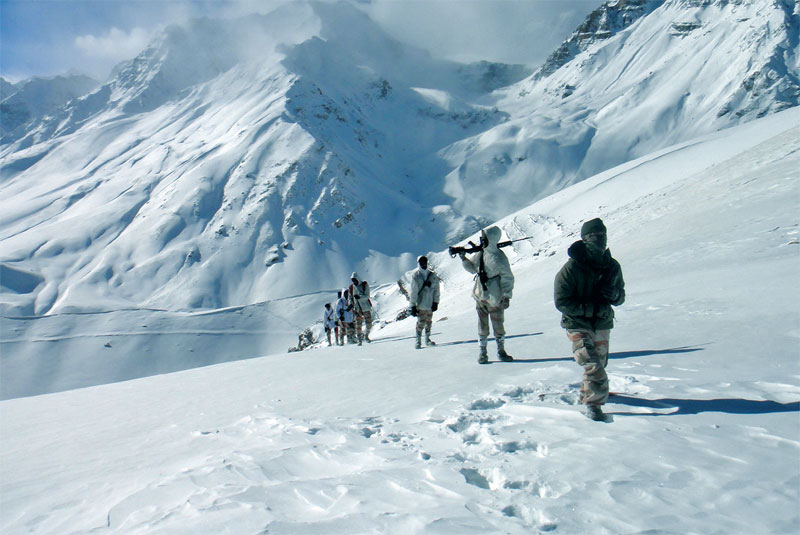An experienced border guarding force is a blessing for any nation
Dr Sudhakar Natarajan
The stern-faced Chinese officer with his men in green People’s Liberation Army (PLA) uniform was the first unexpected sight the Indo-Tibetan Border Police (ITBP) party commander saw as he ascended the strategic 18,176ft Karakoram Pass. The Chinese were standing just across the border pillar that marked the boundary between India and China.

The rest of the ITBP party that was still climbing the steep slope was unaware of what awaited them, as they the full panoramic view of this situation was beyond their line of sight.
The ITBP officer slowly, without any jerky movements that could be construed as a provocation, raised his hands and said a single word, with nerves of calm steel, without displaying any emotion. Just as a matter of fact, and softly. Dushman.
ITBP soldiers, who had trained all their lives for a situation like this, were immediately deployed. A couple of them quickened their steps calmly to either side of the undulating feature. The remaining party of 14 men quickly formed an extended line on both sides of the ITBP officer. This was the part of the standard drill. The ITBP is trained for these situations. They know every rock, stone and even the grain of sand in this bone-numbing, blood-freezing high-altitude pass that can be reached after crossing the Depsang plains and moving north to this geographical feature. It is called the KK pass, that is actually a saddle between two mountains and about 148 feet wide, where icy winds slap and later numb any exposed skin of the face.
As the sky was overcast with grey clouds and the wind was howling like a banshee, the Chinese were restless. As is well known, they are unwilling conscripts, forced to serve in this harsh cold desert plateau. In contrast, it was as pleasant a weather as a routine walk in Lodi Gardens for the ITBP men, as they were hardened high-altitude troops, who served for most of their careers in these climes.
The ITBP officer rapidly profiled the psychological state of the Chinese officer and saw that there was tension on his face. The ITBP officer kept his face and body language neutral, as per the ITBP training.
The Chinese PLA officer, who appeared to be a major, beckoned the ITBP officer to come forward by making a ‘come hither’ gesture with both his hands. The border stone pillar was still 20 feet away. The ITBP officer took few steps forward towards the pillar. Then he looked up. He could see Chinese soldiers who had taken up firing positions on either side of the saddle.
Now his mind worked tactically. Was this a trap? The Chinese were asking the ITBP party to advance, but had taken up firing positions at the heights. Was he walking into the killing zone? A tense situation. Even a single jerky movement could have led to a fire-fight.
How did the ITBP land up in this potentially volatile situation? To know this, let’s rewind to a few hours ago.
Just after a sumptuous breakfast of crisp oily puris, egg powder omelette made with dehydrated onions and sickeningly sweet Milkmaid tea, the ITBP Border Out Post (BOP) commander exclaimed, “Let’s go and do some area domination at KK pass.”
The young assistant commandant, Anand Singh Yearsong, with four years’ service in the elite crack mountain border guarding force, said this to his friend, assistant commandant Surinder Singh Mahar, the medical officer, at one of the high altitude ITBP BOPs in the sub-sector north (SSN) under the 21 ITBP battalion, under command of Comdt Gurdawar Ram.
They took 15 men along with them with 7.62 SLR rifles that is semiautomatic gas operated tilting breechblock weapon with a muzzle velocity of 2,700 feet/second and highly accurate trajectory, specially modified for rarified air of Ladakh by Defence Research and Development Organisation and Ordinance Factory (OF).
Now let’s get back to the evolving situation at the KK pass.
Anand smiled. He pointed his fingers to either side of the saddle, where the Chinese PLA had taken up positions to fire, and brought both his palms in a downward arc, like a graceful Ladakhi dance step, indicating to the PLA major to bring his men down from the firing positions.
You must be logged in to view this content.

